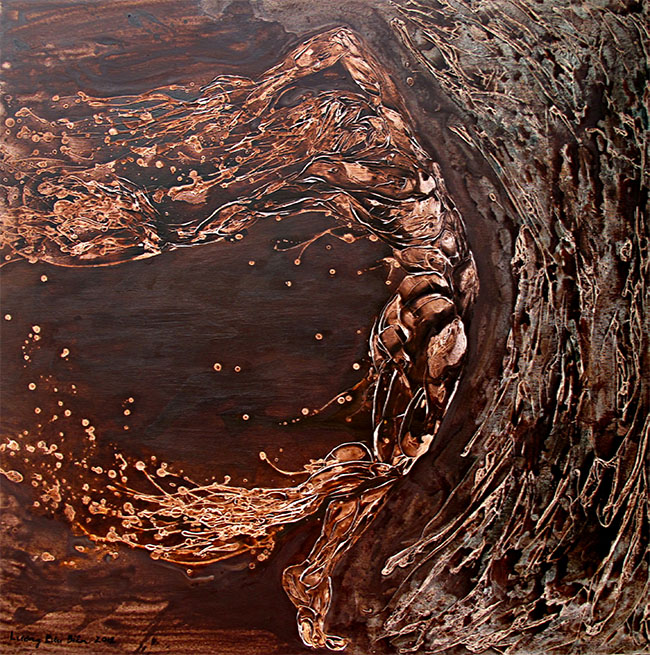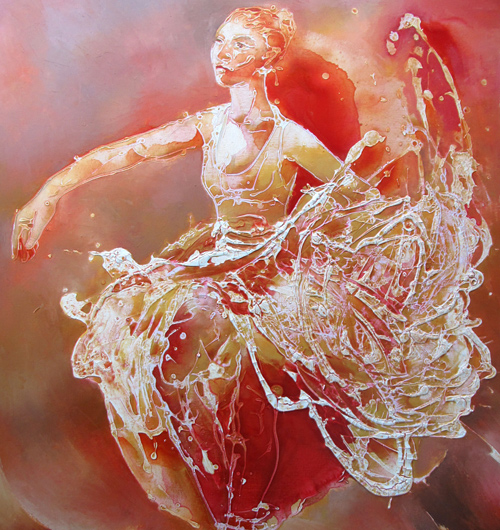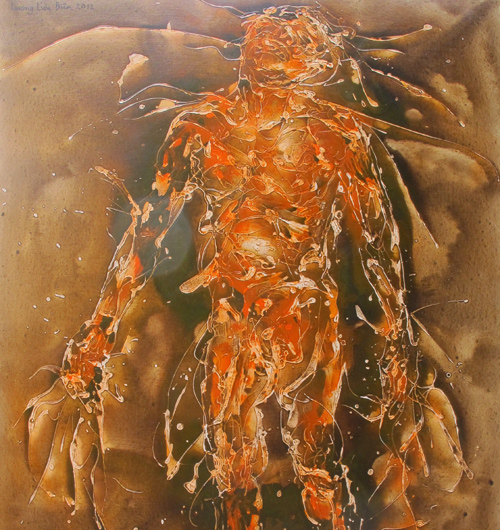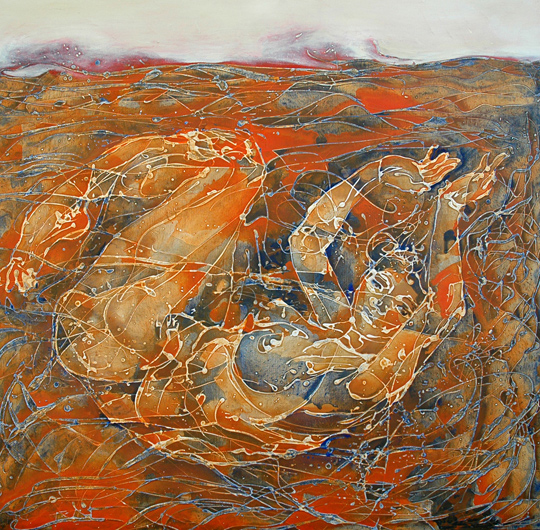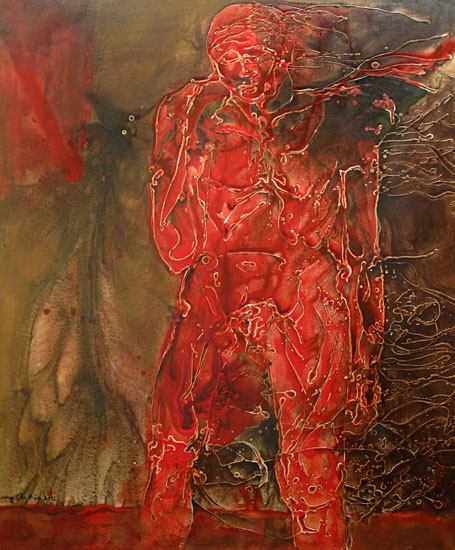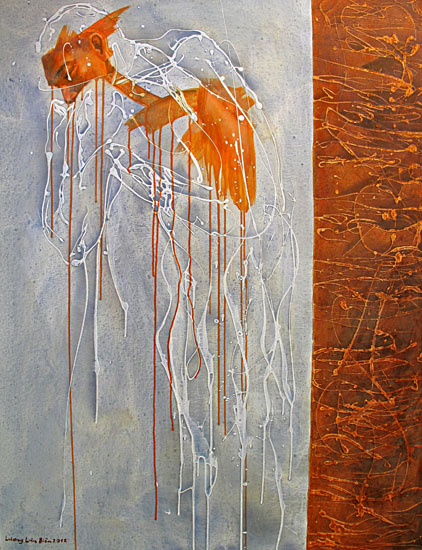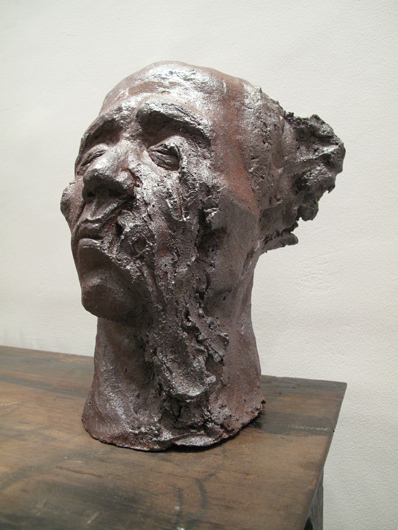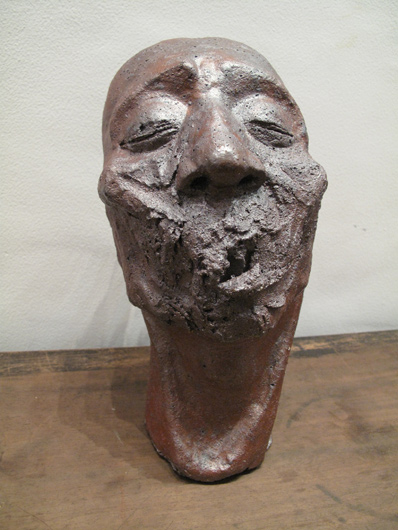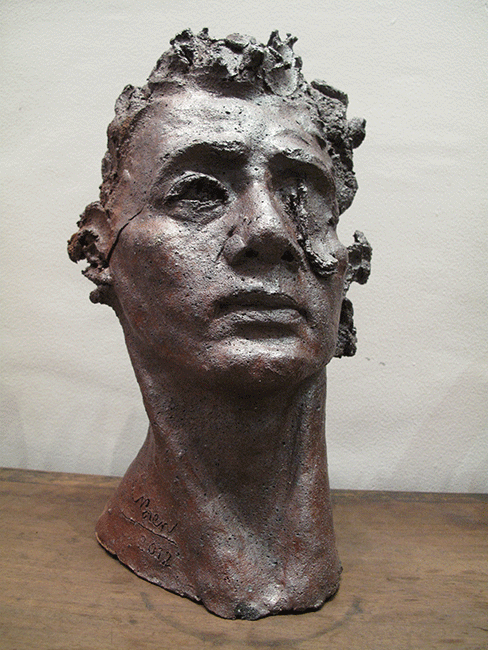Evolution
Opening Reception: 6 Dec 2012, 6:00 - 9:00 pm
6 - 29 Dec, 2012
With his latest collection Evolution, Luong Luu Bien shows that the transformative process referred to in the title can manifest dramatic change, and yet also preserve the fundamental nature of a thing. The heavy and melancholy tone that has been the hallmark of Bienâs earlier work has been replaced in his current collection with paintings that radiate feelings of lightness, movement and, in certain cases, unrestrained joy. What has not changed is the artistâs unique style which employs techniques learned…
With his latest collection Evolution, Luong Luu Bien shows that the transformative process referred to in the title can manifest dramatic change, and yet also preserve the fundamental nature of a thing. The heavy and melancholy tone that has been the hallmark of Bienâs earlier work has been replaced in his current collection with paintings that radiate feelings of lightness, movement and, in certain cases, unrestrained joy. What has not changed is the artistâs unique style which employs techniques learned…
With his latest collection Evolution, Luong Luu Bien shows that the transformative process referred to in the title can manifest dramatic change, and yet also preserve the fundamental nature of a thing. The heavy and melancholy tone that has been the hallmark of Bien’s earlier work has been replaced in his current collection with paintings that radiate feelings of lightness, movement and, in certain cases, unrestrained joy. What has not changed is the artist’s unique style which employs techniques learned studying lacquer painting to create mixed media works that have the effect of being sculptures painted into canvas.
The characters portrayed in Bien’s paintings – often depicted naked – are placed in a world devoid of any context but color. Bien says, “I am intrigued by a theater movement I once heard of where the actors put on plays without any costumes or make-up and yet still managed to make audiences lose themselves in the story. I feel the same way about my paintings. The artistic language of my paintings should be enough to create a mood or mental state and there is no need for clothing or imagery to clarify things any more than that. I am more concerned with viewers ‘feeling’ my paintings than I am with their ‘understanding’ them.”
Another signature of Bien’s work is a raw emotional honesty that gives the viewer the sense that what is being expressed comes from a real place within the artist’s psyche. Bien is not creating images for effect, but instead channeling his deepest feelings directly onto his canvases. Bien’s 2009 collection Fossils pictured spare figures in cramped and oppressive scenarios that conjured up alienation and loneliness, feelings which Bien confirms he often experienced as a child and young man. This fearlessness in expressing his inner turmoil and pain makes Bien’s work compelling and allows the viewer to continuously lose himself in the one act plays that his paintings resemble.
The paintings of Evolution indicate that Bien’s mental state has changed greatly in the ensuing three years since his last solo exhibition. While the paintings of Fossils were static and the subjects often seemed imprisoned in their tightly bound worlds, Bien’s new work is all flow, warmth and freedom. In Wave, a young woman floats in a blue sea but her body is taut, poised as if she is about to spring forth from the waves. In Ballerina 1, Ballerina 2, and several other pieces, Bien expertly conveys the movement and grace of the dancer. The individual figures of the two lovers in Love are so thoroughly intertwined in their embrace that their bodies are indistinguishable save for their feet and hands.
Evolution marks the first time that Bien has exhibited sculpture. Created in his home Dong Nai Province, the six heads of the collection were fashioned free hand by Bien from terracotta, a type of earthenware that contains metal among its ingredients and is rough in composition. Fired in a traditional dragon kiln in an oxidizing atmosphere at temperatures of nearly 1000°C, Bien’s sculptures have emerged with a pleasing burnished brown or reddish tint. When lightly struck they produce a clear metallic ping, evidence of a successful firing which has left no damage or cracking. The finished sculptures of Evolution are raw and filled with cuts and gashes that disfigure their appearance. Their scars and mutilations are metaphors for the wounds that we all carry on the inside.
With the paintings and sculptures of Evolution Luong Luu Bien shows not only his emotional range but also his artistic versatility through his use of various media in his paintings and in his bold first statement as a sculptor. The overall result is an engaging portrayal of the rawness of human nature and a peak into the often painful and destructive process that must be passed through to create something new and beautiful.
Craig Thomas and Xuan Mai Ardia
Read more
Read less

